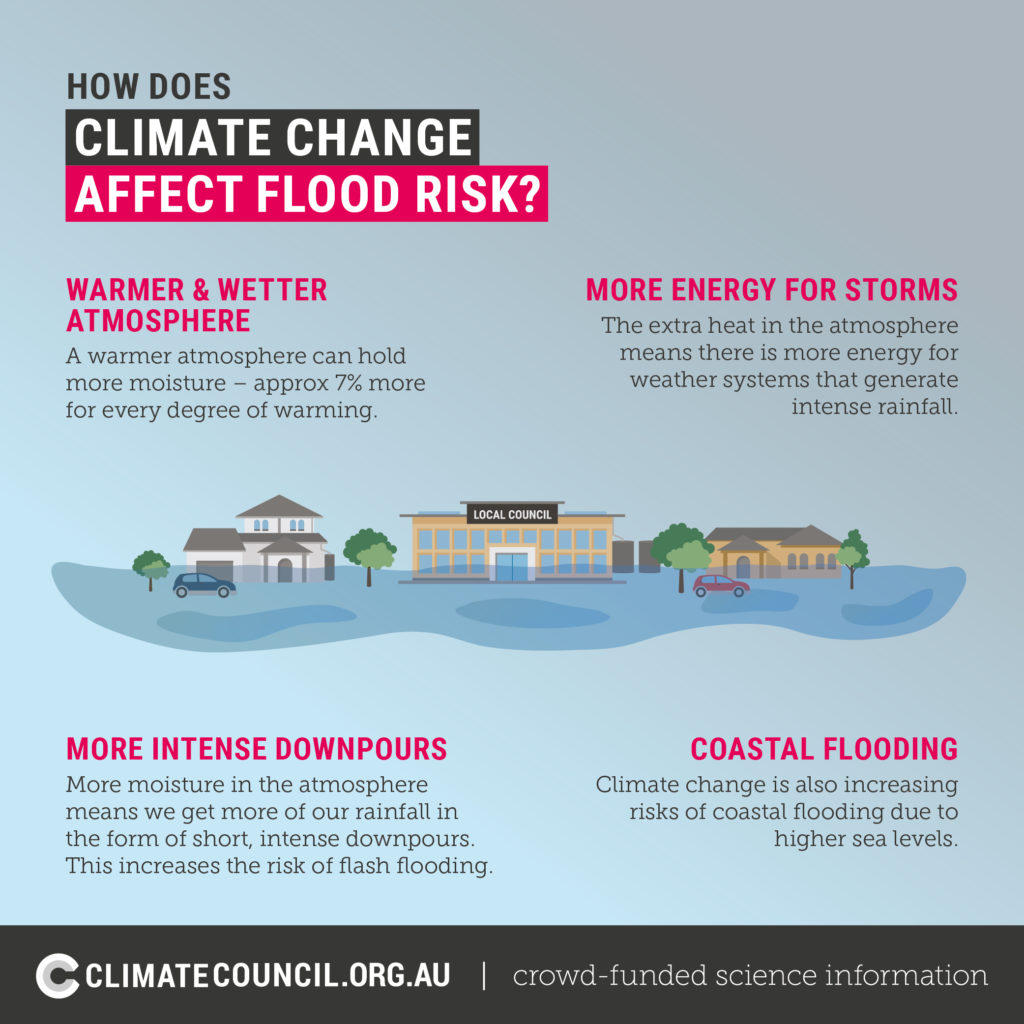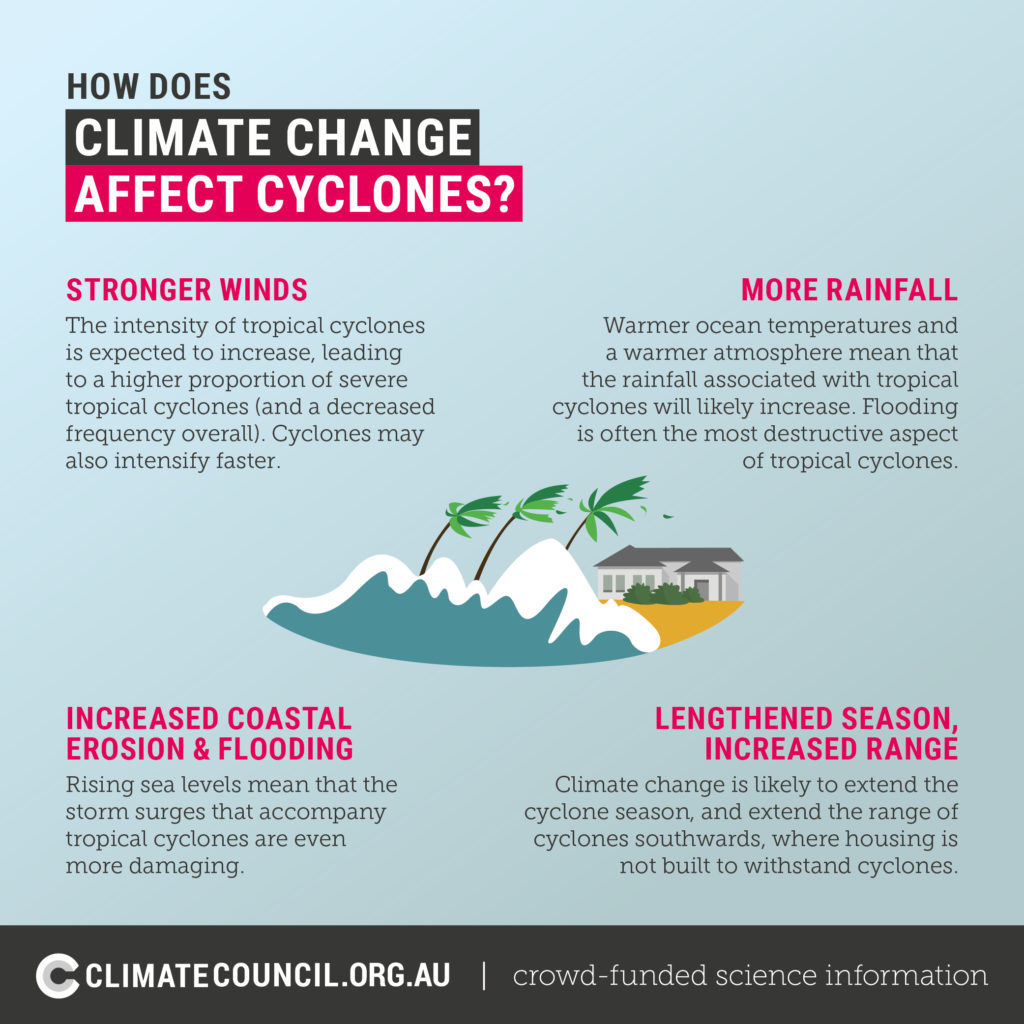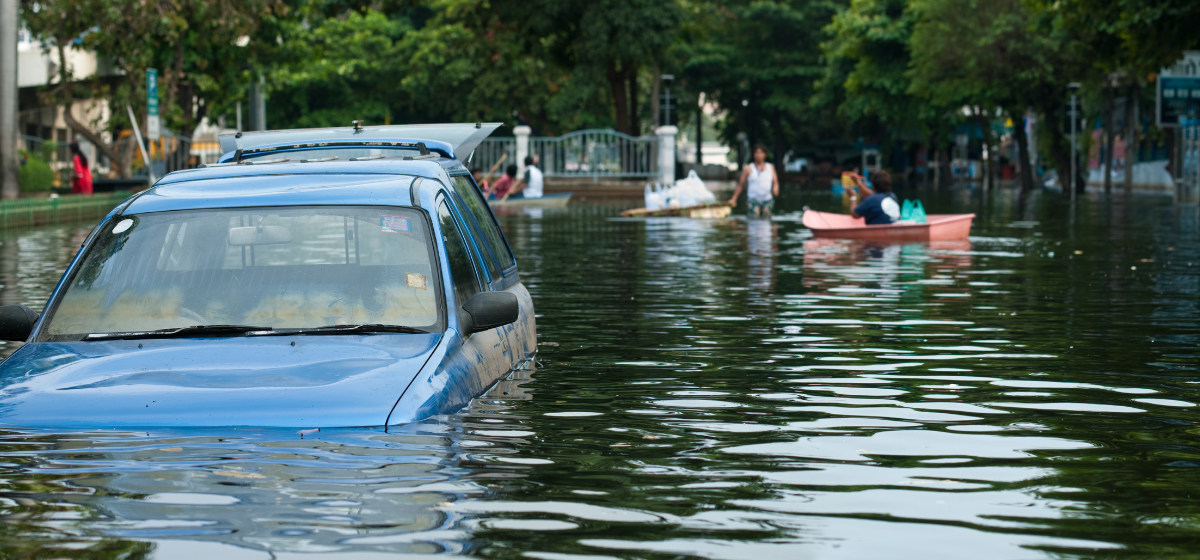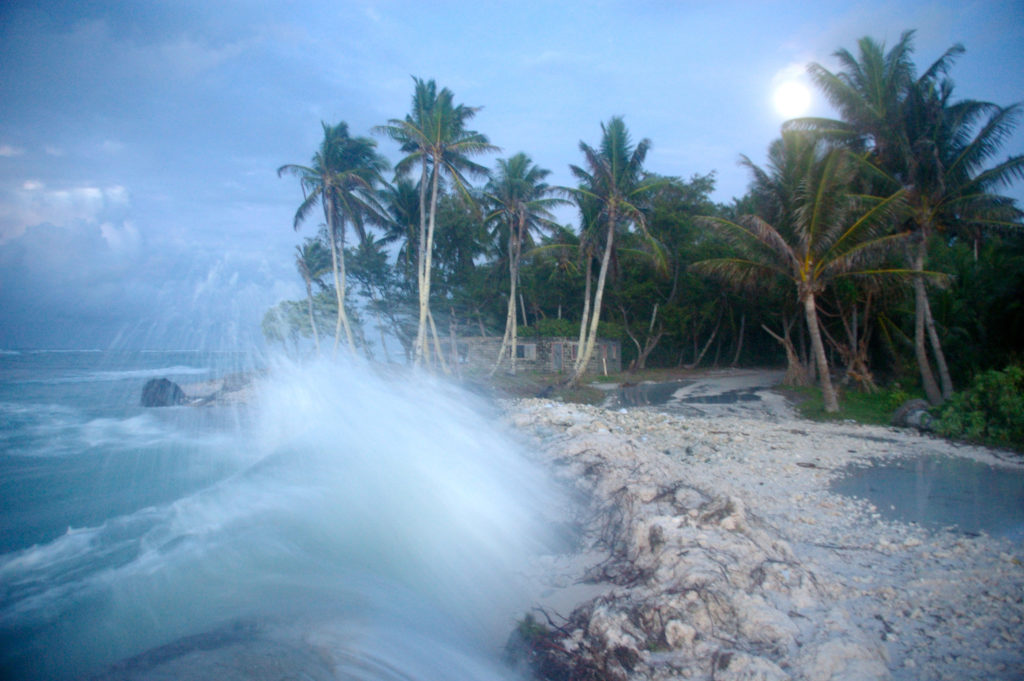Australian summers used to be our favourite season. Now, due to climate change, it’s become a season many feel anxious about.
Climate change, driven by the burning of coal, oil and gas, has pushed us into a dangerous, costly new era of escalating extreme weather events. Over the past few years, this has been the lived experience of far too many Australians who’ve suffered through prolonged droughts, deadly heatwaves, catastrophic bushfires, and devastating floods.
Communities and emergency services are already being pushed to their limits, with many towns still recovering from recent events (including back-to-back ‘compound’ events), and many families still living in temporary accommodation.
Sadly, experts are warning more disasters are on the horizon this summer. Further extreme rainfall and flooding could drench already saturated catchments, the Bureau of Meteorology has predicted a high chance of more cyclones than usual for the upcoming summer, and bushfires have already started in parts of Western Australia and the risk of grass fires in inland NSW is a real worry. Plus the possibility of marine heatwaves could cause mass bleaching on our coral reefs. Yet again. And the recent rains and rising temperatures could mean that many Australians are at risk of debilitating and in some cases deadly mosquito-borne diseases.
Our current disaster planning and management systems are no longer fit for purpose to keep Australians safe in our changing climate. This past year, we have seen how consecutive, record-breaking events and unnatural disasters can at times overwhelm emergency services and devastate communities.
So what can we do to ensure we’re as prepared as we can be for the summer ahead?
- Prepare for floods
- Prepare for fires
- Prepare for thunderstorm asthma
- Prepare for cyclones
- Preparing for mosquito-borne disease
Preparing for floods:
With climate change we can expect more of our rain to fall in the form of short, intense downpours, which raises the risk of flooding. Across Australia, there has already been an observed increase in the proportion of rain coming from short-duration (hourly and sub-hourly) heavy rainfall events.
Floods pose the greatest climate risk to Australian homes, a fact reflected in our Climate Risk Map, where 80% of the properties classified as high risk by 2030 are most at risk of riverine flooding. Riverine flooding is when a river exceeds its capacity, inundating nearby areas.
Floods can also impact critical infrastructure which can have ongoing effects on health and well-being. For example, floods frequently damage power transmission and sometimes power generation, which also has knock-on effects like leaving people without access to refrigeration or the Internet and mobile phone reception. Extreme weather events such as intense rainfall and floods can reduce water quality and availability, jeopardising water security and affecting human health.

What to do:
It doesn’t have to be raining in your area for a flood to impact you. In an emergency, the situation can change rapidly. You could be at risk even if you’ve never seen floodwaters near your home. Find out if your home is at risk of flooding here. Before a flood arrives, it’s important to: ask, learn, plan and prepare.
Make a flood plan and an emergency kit ahead of time and make sure everyone in your household knows what to do if there is a flood.
Protect your health during a flood by:
- Familiarising yourself with your community’s evacuation route and warning signals, and identify areas prone to flooding or landslides
- Chlorinate or boil all water for drinking and food preparation
- Promote good hygienic practices and safe food preparation techniques
- Avoid walking or driving through flooded areas and standing water
- Throw away any food that has come in contact with floodwater
- Protect against mosquitos
Flood events not only have a severe impact on human life and the economy, but also on our beloved pets, precious wildlife and valuable livestock – learn how to care for your furry friends in flooding events here.
Preparing for fires:
A fire needs to be started (ignition), it needs something to burn (fuel) and it needs conditions that are conducive to its spread (weather). Climate change can affect all three of these components in complex ways, but it is weather on a particular day that is the most crucial determinant of fire spread, intensity and impact. At higher temperatures, fuel is ‘pre-heated’ and is more likely to ignite and to continue to burn. Once a fire is ignited, very hot days with low humidity and high winds are conducive to its spread.
History tells us that widespread inland floods like those we’ve experienced across eastern Australia in 2022 can create environments for supercharged new growth, and large grass fires are rarely far behind. We are already seeing the beginning of fire season play out in northern Perth.
What to do:
A well prepared home is more likely to survive a bushfire. Even if your plan is to leave early, the more you prepare your home, the more likely it will survive. A well prepared home can also be easier for you or firefighters to defend, and is less likely to put your neighbours’ homes at risk. Plus, you will also be better protected if a fire threatens suddenly and you cannot leave.
Tips to prepare for a fire
- Know your fire danger rating
- Know the bushfire alerts and warnings
- Prepare your emergency kit
- Prepare your home and property
- Manage vegetation around your property
- Prepare your pets and livestock
Read more here for recommendations on how to keep your garden fire preventative.
Check out our full list of fire and emergency chiefs recommendations to Federal Government here.
Find out your home’s risk level here.
Preparing for thunderstorm asthma:
When there is a lot of grass pollen in the air, thunderstorms can aggravate certain plants, and trigger asthma symptoms caused by ryegrass pollen allergies. This can occur suddenly in warmer weather, because thunderstorm weather can cause pollen grains to burst into tiny pieces which are then blown around our environment by wind. When people with a pollen allergy breathe in these tiny pieces of pollen, they can get deep inside the lungs and trigger an asthma attack, even to people who’ve never experienced asthma before.
Back in November of 2016, the combination of thunderstorms and pollen caused an asthma disaster in Victoria, with thousands of people suddenly experiencing asthma attacks and finding it hard to breathe. The influx of patients during a short period placed a strain on ambulance and hospital emergency rooms across the state.
Abnormal weather patterns have become more common due to climate change, increasing the frequency and severity of events such as thunderstorm asthma.
What to do:
Find out which regions are most perceptible to thunderstorm asthma here.
Early prevention:
- Continue using your asthma medicines prescribed by your doctor. Most adults and adolescents with asthma need more protection than just a blue/grey puffer.
- If you only use a blue-grey puffer, you may need more protection before the pollen and thunderstorm season. Ask your doctor to check your asthma.
- Make sure you have a written asthma action plan that is up to date. If not, ask your doctor to write one.
During spring and summer:
- Always carry your reliever inhaler.
- Keep up to date with pollen counts and weather forecasts to know if a storm is coming.
- Stay inside with closed windows and recycling air conditioning before and during storms
People with hay fever but not asthma:
People with hay fever should also avoid being outside in gusty wind during a thunderstorm in a place where there is ryegrass pollen in the air (most of south-eastern Australia). Talk to your doctor about which treatment is best for you.
Preparing for Cyclones:
In our supercharged climate, when tropical cyclones form they form in a climate that is warmer, wetter, and more energetic than before. This surplus of energy translates to cyclones that are faster to develop and faster to intensify. The added heat also leads to greater windspeeds and water-carrying capacity, which means cyclones are far more destructive.
The Bureau of Meteorology has predicted a high chance (73 percent) of more tropical cyclones than the typical 11 for the Australian region this summer.
Take precautions to reduce the risk of damage or injury from these factors before a cyclone hits.

What to do:
Similar to being ready for a flood or fire, the best way to be prepared is by having a plan well ahead of any potential cyclone by:
- Preparing your property
- Knowing when to take action
- Packing your emergency kit
- Staying informed
More details on how to prepare for a cyclone here, and here as well.
Preparing for mosquito-borne disease:
A warming and less stable climate increases disease rates, particularly by bringing people and disease-causing organisms closer together. Notably, higher temperatures and increased rainfall have expanded the range of mosquitos and contributed to outbreaks of dengue fever and malaria. The floods of 2022 have increased the risk of mosquito-borne diseases, with a potential for a major outbreak of the Japanese encephalitis virus, and as many as 750,000 Australians at risk of exposure to the deadly virus.
How to stay safe/be prepared
There are two ways to protect yourself from Japanese encephalitis virus infection:
- Avoid being bitten by mosquitos
- Receive a vaccination for the virus.
You can protect yourself from being bitten by mosquitos by:
- Applying and regularly reapplying an effective insect repellent on exposed skin
- Wearing long, loose fitting clothing when outside
- Ensuring accommodation, including tents, are properly fitted with mosquito nettings or screens
- Using insecticide sprays, vapour dispensing units (indoors) and mosquito coils (outdoors) to clear rooms and repel mosquitoes from an area
- Covering all windows, doors, vents and other entrances with insect screens
- Removing any water-holding containers where mosquitoes may breed.
If you believe you may be infected with the JEV or any other mosquito-bourne disease, seek urgent medical assistance.
We are facing a future of more destructive extreme weather events due to climate change, with the pendulum shifting from very wet to very dry seasons, and weather patterns set to intensify. The influence of climate change on extreme weather events is making long-term recovery operations more challenging. It is also rendering the systems we have so far used to plan and manage disasters unfit for purpose. Many communities are already leading the way to a safer future, with initiatives such as community energy, active transport, and community resilience hubs. Governments need to back these community-led efforts, and help to prepare us all for worsening extreme weather.
If feelings of stress, sadness or frustration overcome you when thinking or hearing about the state of the planet and potential upcoming unnatural disasters, you’re not alone. In fact, research shows that 75% of Australian voters are worried about climate change. More tips for dealing with eco-anxiety and stress here.
We have the solutions needed to safeguard our planet for future generation at our fingertips—we just need the political will to make it happen.
Every positive action adds up.
Extra resources and services
SES: 132 500
Australia wide emergency services website
NSW State emergency services website
You can make your own emergency plan here.
The New South Wales Government Local Land Services – 1300 795 299 for emergency support in managing livestock or flood impacts
The Queensland Government Business Queensland service provides advice and contact numbers for preparing animals for natural disasters
To find your closest qualified wildlife rescue service or vet, you can download this app.
Evacuation centres:
Wildlife helplines:
NSW: WIRES 1300 094 737
VIC: Wildlife Victoria (03) 8400 7300
QLD: RSPCA QLD 1300 ANIMAL
SA: Fauna Rescue of SA inc 08 8289 0896
WA: Wildcare WA (08) 9474 9055.
ACT: ACT Wildlife 0432 300 033










